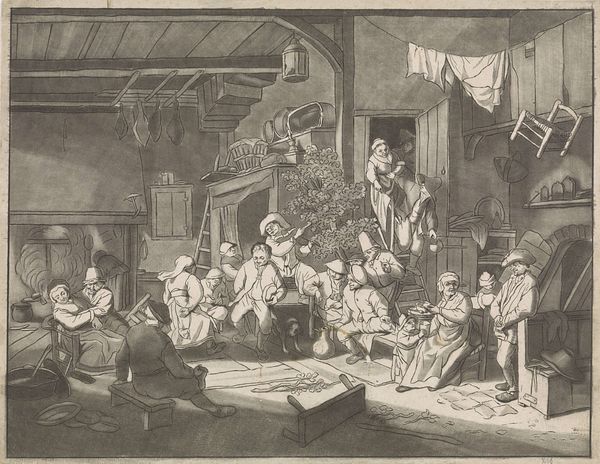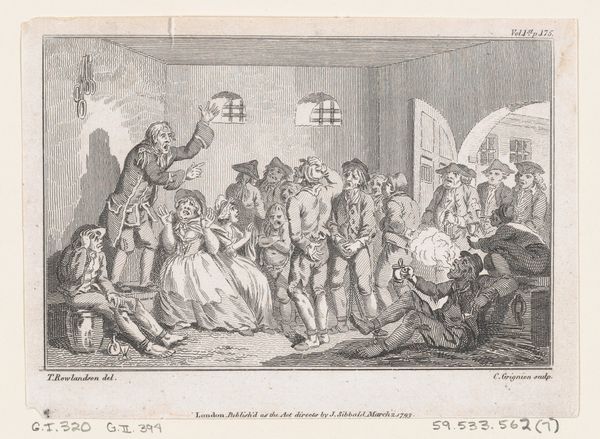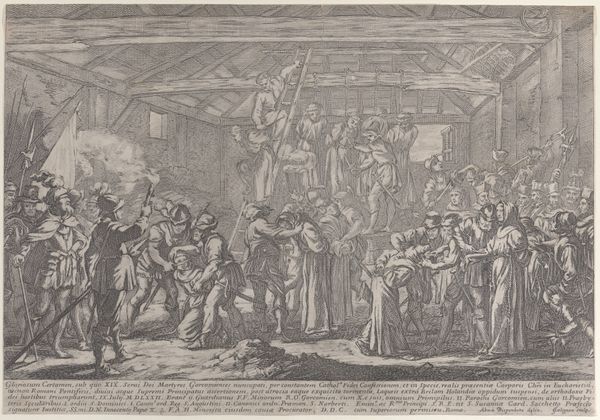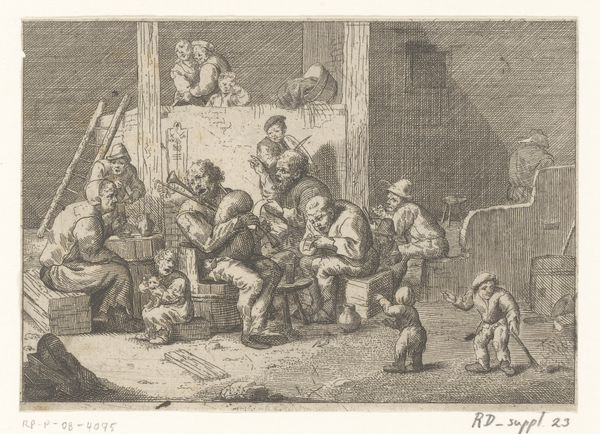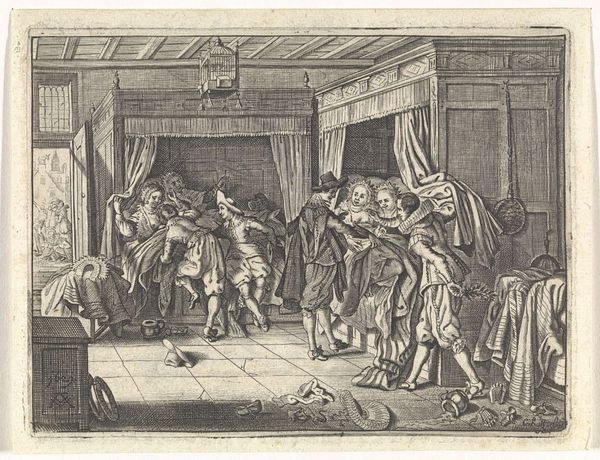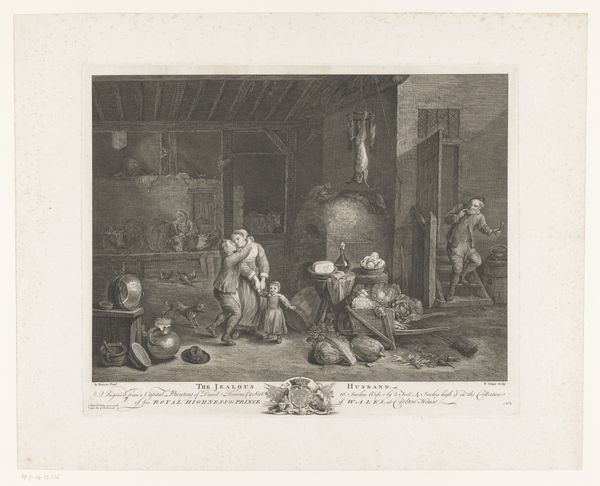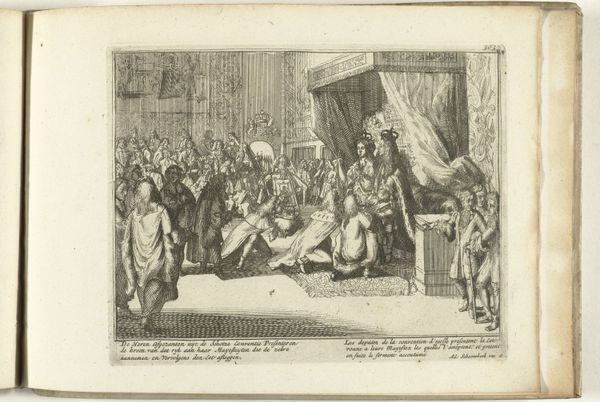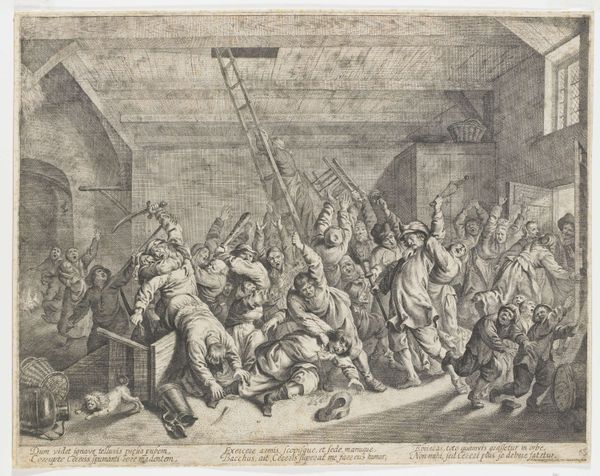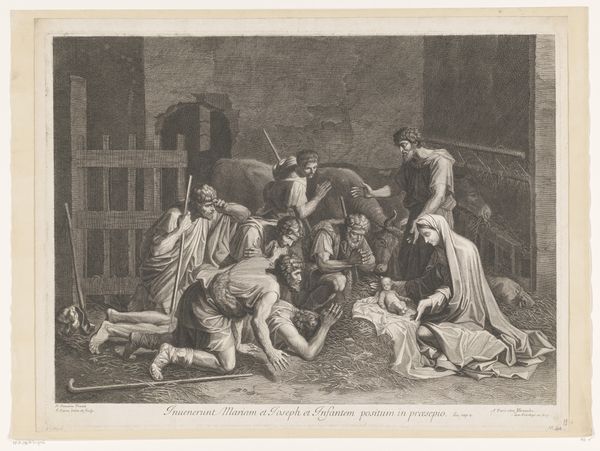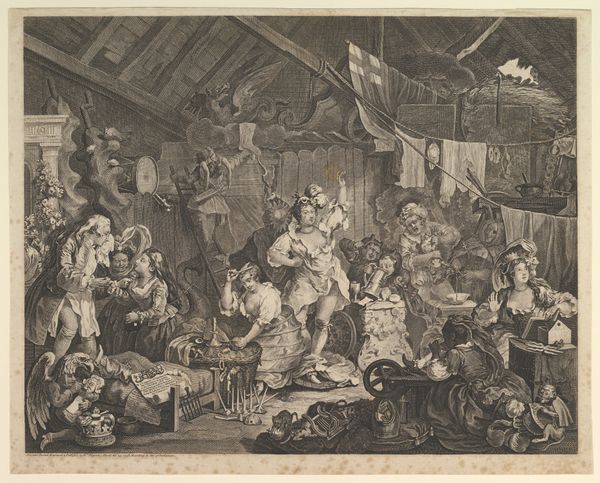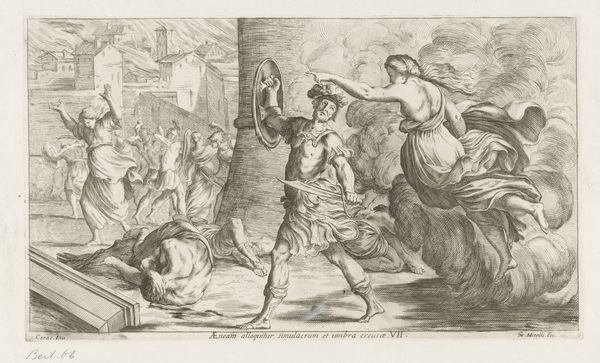
drawing, print
#
drawing
#
mechanical pen drawing
# print
#
pen sketch
#
old engraving style
#
sketch book
#
personal sketchbook
#
pen-ink sketch
#
men
#
pen work
#
sketchbook drawing
#
storyboard and sketchbook work
#
sketchbook art
Dimensions: Sheet: 2 9/16 x 3 1/8 in. (6.5 x 8 cm)
Copyright: Public Domain
Curator: Standing before us is "A Rake's Progress, Plate 8," a print created sometime between 1795 and 1805. Editor: It's immediately unsettling. That tightly packed room and those haunted, vacant eyes suggest complete breakdown and despair. Curator: Indeed. Let's consider the conditions under which such imagery was disseminated. As a print, this image could be reproduced relatively cheaply, making it accessible to a broad segment of the population. It reflects the consumption of morality tales as popular entertainment, almost a tabloid of the time. Editor: Looking at the visual motifs, I'm struck by the pervasive symbols of madness and confinement. Notice the shackles discarded on the floor in the lower left, yet bars remain visible in the background. And what about the theatrical figures in the doorway – Pierrot-like characters observing the spectacle with a bizarre detached amusement? Curator: I'd add that the use of engraving as a reproductive process is telling here. The very act of painstakingly incising the image into a metal plate echoes the incremental decline and eventual breakdown of the rake, both in financial ruin and mental disintegration. The repetitive lines speak to laborious, manufactured image production for wide distribution. Editor: The orb hanging over their heads suggests some celestial order disrupted and the dog nipping the madman points to bestial and instinctive drives unleashed; those familiar characters in clothing signify folly’s reign, don’t they? Curator: Yes, consider also how it mirrors shifts in the perception and treatment of mental illness during that era, moving from private family matter to public spectacle and medical concern. And the conditions of its production highlight a move from artistic originality to a sort of artistic reproduction. Editor: For me, those visual elements act as a lens through which societal anxieties of the period get refracted, making madness and morality part of a theatrical drama, and bringing cultural understanding together to present itself in the arts. Curator: Examining both the image and its method of creation brings context into the social and economic implications of creating artwork within a capitalist system. The image served a didactic purpose while participating in a visual market. Editor: Through imagery of broken minds and revelry, "A Rake's Progress" invites us to probe collective fears, our human susceptibility to our base desires, and our search for social control through symbolic order.
Comments
No comments
Be the first to comment and join the conversation on the ultimate creative platform.
